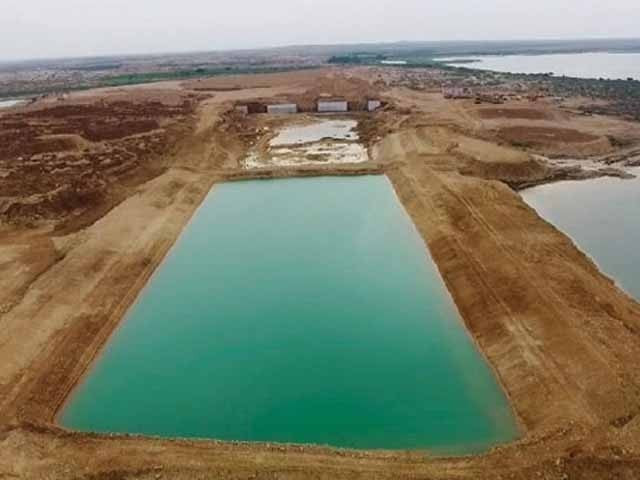Business
Poor planning not deforestation to blame for devastation | The Express Tribune

ISLAMABAD:
Pakistan inherited the legacy of British Forestry institutional and legal framework. Khyber-Pakhtunkhwa (K-P) holds 40% of the country’s forest share, making it the richest province in this respect.
Within K-P, 14.1% of the total land area is covered with forests. The northern, north-western, and eastern parts of K-P are steep and mountainous, making them highly vulnerable to erosion and landslides.
Yet, these forests provide freshwater to major rivers running from north to south of the country. They also offer habitat for biodiversity, promote tourism, preserve natural beauty, and stabilise climate impacts on humans and other species.
Forests act as the lungs of Pakistan by absorbing carbon dioxide and supplying oxygen through carbon sequestration. They balance the environment in both time and space. Beyond these services, they provide food, shelter, fruit, and livelihoods. Forestry plays many roles in stabilising nature, but flood and erosion control is one of the most vital.
Forests and their ecosystems stabilise soil and protect it from erosion. The K-P forest department, working with local communities, forest landowners, and other stakeholders, carries out plantation drives twice a year during spring and monsoon seasons.
Major programmes include the Tarbela watershed plantation, social and farm forestry, Kalam integrated forestry, and the Billion and Ten Billion Tree plantation drives. Recently, the Green Pakistan Programme was also launched.
Hundreds of thousands of acres have been planted and protected through natural regeneration. Some of these projects received technical and financial support from the World Bank, WFP, GIZ, KFW, USAID, FAO, Dutch agencies, and UN organisations, while others were locally supported.
The Billion Tree programme was entirely funded by K-P, while the Ten Billion and Green Pakistan initiatives were financed jointly by the provinces and the federation.
Pakistan gained significant recognition for these pioneering projects, particularly the Billion and Ten Billion Tree programmes. They helped the country achieve the Bonn Challenge; restoring 150 million hectares of degraded and deforested land by 2020 and targeting 350 million hectares by 2030. These efforts brought international goodwill and respect for Pakistan’s commitment to forestry.
Despite these achievements, the recent floods in K-P sparked criticism, with some blaming deforestation for the devastation. Most critics, however, are either non-professionals or using the argument for point-scoring.
Monsoon rains have been part of the region’s history for centuries, and the north-eastern parts of K-P regularly receive heavy showers. Flood disasters are not unique to Pakistan, India, China, and other regional countries also face similar challenges.
Forests do reduce the intensity of rainfall by intercepting drops, but steep terrain, surface runoff, and soil saturation often result in flash floods regardless. Trees are living entities with life cycles, and their timber supports many needs at an economically viable age.
Exploitation beyond carrying capacity poses risks, but the forest department is already regulating usage under forestry laws. Importantly, Pakistan also achieved its first carbon credits in the forestry sector for mangrove restoration in Sindh.
If deforestation alone were responsible for floods, then how do we explain Karachi’s crisis? With less than two days of rain, life in the city is paralysed, schools close, offices shut, and people face severe losses. Karachi is flat and barely above sea level, yet devastation is immense.
In contrast, K-P has endured downpours for nearly two weeks. This contrast highlights the real culprits: unplanned infrastructure and obstruction of natural waterways.
Blaming forests or climate change alone oversimplifies the issue. Climate change is indeed a pressing factor, but it is often discussed superficially.
A look back at the Ice Age reveals that CO2 once fell below 190 ppm, with the lowest levels at 182 ppm. Below 150 ppm, most terrestrial plants could not survive. This shows that while global warming beyond tolerable limits is dangerous, some degree of warming is essential for life on Earth. Human responsibility for pushing warming beyond safe thresholds cannot be ignored.
Most natural forests in K-P belong to local communities but are managed by the forest department. The International Union for Conservation of Nature (IUCN) reports that only 7% of forests are government-owned, while 93% belong to people and communities.
Legal forest categories in K-P include reserved forests, which are government-owned, and protected or Guzara forests, which belong to local people but are managed by the department. Community and private forests also exist.
In the early 1970s, the K-P forest department-initiated tree plantations and soil conservation on private grazing lands in the Tarbela watershed. Agreements with landowners allowed planting of trees and soil conservation to reduce erosion and prolong Tarbela reservoir’s life.
Accusing the forest department alone for deforestation is therefore unjustified, since most forests belong to communities. Still, under law, the department must manage them to protect ecosystems. Property rights, community ownership, and open access make management highly challenging.
Another obstacle is the sheer scale of forest areas, which are open and boundary-less, unlike urban banks that are heavily guarded yet still robbed. Expecting forest staff to control vast, open lands without strong governance structures is unrealistic.
Thus, the issue goes deeper than forestry staff or tree cover. It is about poverty, community rights, and governance. Policymakers must recognise these ground realities.
Strengthening forest protection requires supporting local communities, reducing poverty-driven dependence on forests, and improving management practices. Only then can K-P’s forests be safeguarded while also minimising flood risks.
THE WRITER HOLDS A PHD IN FORESTRY AND IS A CLIMATE CHANGE, FORESTRY, AND ENVIRONMENT EXPERT
Business
Peel Hunt cheers ‘positive steps’ in Budget to boost London market and investing

UK investment bank Peel Hunt has given some support to under-pressure Chancellor Rachel Reeves over last week’s Budget as it said efforts to boost the London market and invest in UK companies were “positive steps”.
Peel Hunt welcomed moves announced in the Budget, such as the stamp duty exemption for shares bought in newly listed firms on the London market and changes to Isa investing.
It comes as Ms Reeves has been forced to defend herself against claims she misled voters by talking up the scale of the fiscal challenge in the run-up to last week’s Budget, in which she announced £26 billion worth of tax rises.
Peel Hunt said: “Following a prolonged period of pre-Budget speculation, businesses and investors now have greater clarity from which they can start to plan.
“The key measures were generally well received by markets, particularly the creation of additional headroom against the Chancellor’s fiscal rules.
“Initiatives such as a stamp duty holiday on initial public offerings (IPOs) and adjustments to the Isa framework are intended to support UK capital markets and encourage investment in British companies.
“These developments, alongside the Entrepreneurship in the UK paper published simultaneously, represent positive steps toward enhancing the UK’s attractiveness for growth businesses and long-term investors.”
Ms Reeves last week announced a three-year stamp duty holiday on shares bought in new UK flotations as part of a raft of measures to boost investment in UK shares.
She also unveiled a change to the individual savings account (Isa) limit that lowers the cash element to £12,000 with the remaining £8,000 now redirected into stocks and shares.
But the Chancellor also revealed an unexpected increase in dividend tax, rising by 2% for basic and higher rate taxpayers next year, which experts have warned “undermines the drive to increase investing in Britain”.
Peel Hunt said the London IPO market had begun to revive in the autumn, although listings activity remained low during its first half to the end of September.
Firms that have listed in London over recent months include The Beauty Tech Group, small business lender Shawbrook and tinned tuna firm Princes.
Peel Hunt added that deal activity had “continued at pace” throughout its first half, with 60 transactions announced across the market during that time and 10 active bids for FTSE 350 companies, as at the end of September.
Half-year results for Peel Hunt showed pre-tax profits jumped to £11.5 million in the six months to September 30, up from £1.2 million a year earlier, as revenues lifted 38.3%.
Peel Hunt said its workforce has been cut by nearly 10% since the end of March under an ongoing savings drive, with full-year underlying fixed costs down by around £5 million.
Steven Fine, chief executive of Peel Hunt, said: “The second half has started strongly, with the group continuing to play leading roles across both mergers and acquisitions and equity capital markets mandates.”
Business
Gross GST collections for November stand at over Rs 1.70 lakh crore; up 0.7 per cent – The Times of India

GST collections: The Gross Goods and Services Tax (GST) collections for the month of November came in at over Rs 1.70 lakh crore. This is a rise of 0.7%, according to official data.SBI Research in a report in November had estimated that the gross domestic GST collections may come around Rs 1.49 lakh crore for November 25 (returns of October 25 but filed in Nov’25), a YoY growth of 6.8%.“Coupled with Rs 51,000 crore of IGST and cess on Import, the November GST collections thus could cross Rs 2.0 lakh crore, driven by the peak festive season demand led by lower GST rate and increased compliance while most of states experience positive gains,” SBI Research had said.This story is being updated
Business
Key Financial Deadlines That Have Been Extended For December 2025; Know The Last Date

New Delhi: Several crucial deadlines have been extended in December 2025, including ITR for tax audit cases, ITR filing and PAN and Aadhaar linking. These deadlines will be crucial in ensuring that your financial affairs operate smoothly in the months ahead.
Here is a quick rundown of the important deadlines for December to help you stay compliant and avoid last-minute hassles.
ITR deadline for tax audit cases
The Central Board of Direct Taxes has extended the due date of furnishing of return of income under sub-Section (1) of Section 139 of the Act for the Assessment Year 2025-26 which is October 31, 2025 in the case of assessees referred in clause (a) of Explanation 2 to sub-Section (1) of Section 139 of the Act, to December 10, 2025.
Belated ITR filing deadline
A belated ITR filing happens when an ITR is submitted after the original due date which is permitted by Section 139(4) of the Income Tax Act. Filing a belated return helps you meet your tax obligations, but it involves penalties. You can only file a belated return for FY 2024–25 until December 31, 2025. However, there will be a late fee and interest charged.
PAN and Aadhaar linking deadline
The Income Tax Department has extended the deadline to link their PAN with Aadhaar card to December 31, 2025 for anyone who acquired their PAN using an Aadhaar enrolment ID before October 1, 2024. If you miss this deadline your PAN will become inoperative which will have an impact on your banking transactions, income tax return filing and other financial investments.
-

 Sports1 week ago
Sports1 week agoWATCH: Ronaldo scores spectacular bicycle kick
-

 Entertainment1 week ago
Entertainment1 week agoWelcome to Derry’ episode 5 delivers shocking twist
-

 Politics1 week ago
Politics1 week agoWashington and Kyiv Stress Any Peace Deal Must Fully Respect Ukraine’s Sovereignty
-

 Business1 week ago
Business1 week agoKey economic data and trends that will shape Rachel Reeves’ Budget
-

 Tech6 days ago
Tech6 days agoWake Up—the Best Black Friday Mattress Sales Are Here
-

 Politics1 week ago
Politics1 week ago53,000 Sikhs vote in Ottawa Khalistan Referendum amid Carney-Modi trade talks scrutiny
-

 Fashion1 week ago
Fashion1 week agoCanada’s Lululemon unveils team Canada kit for Milano Cortina 2026
-

 Tech6 days ago
Tech6 days agoThe Alienware Aurora Gaming Desktop Punches Above Its Weight


1729471601-0/image-(8)1729471601-0-640x480.webp)







